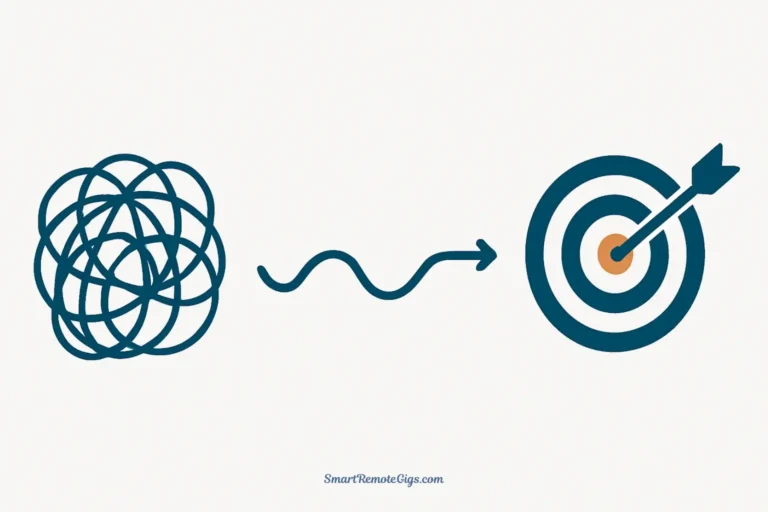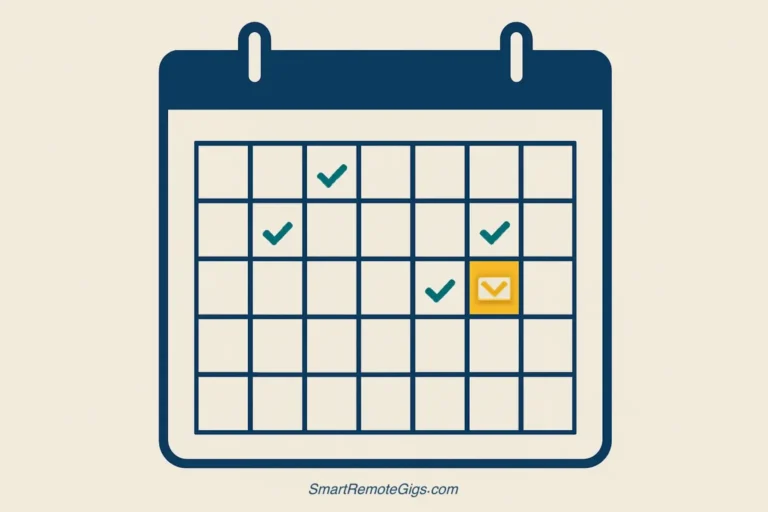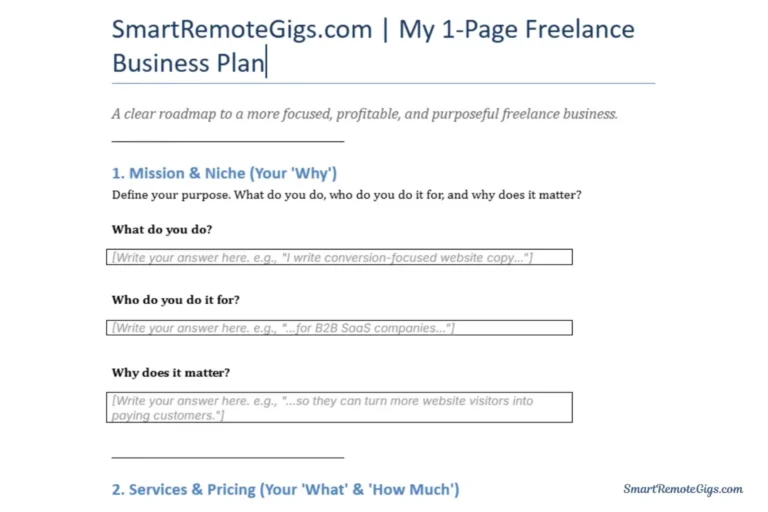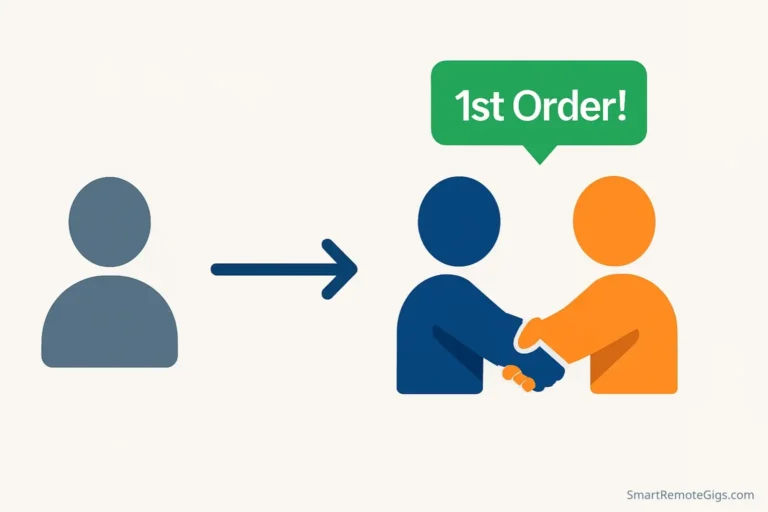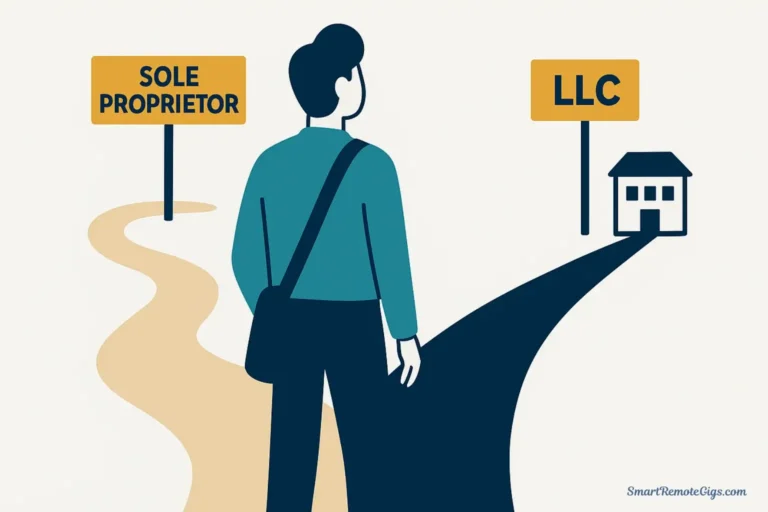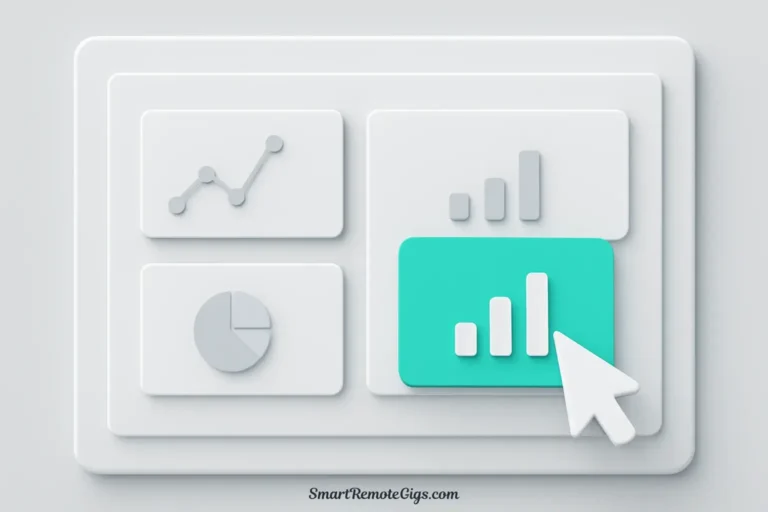You’ve created your Upwork profile, uploaded a photo, and written a basic overview. You’re ready to start freelancing, right? Not quite. You quickly discover the cruel catch-22 that haunts every new freelancer:
“No one will hire you without reviews, but you can’t get reviews without being hired.”
Sound familiar? You’re not alone. Thousands of aspiring freelancers abandon Upwork every month, convinced the platform is “rigged” against newcomers. But here’s the truth: successful freelancers crack this code every single day.
This isn’t another generic “improve your profile” article. This is your tactical playbook – a step-by-step system that transforms your zero-review profile into a client magnet. By following this guide, you’ll land your first Upwork job within 2-3 weeks, guaranteed.
Already decided Upwork is right for you? Perfect. If you’re still choosing between platforms, check out our complete Choosing a Freelance Website: 2026 Beginner’s Playbook first.
Step 1: Your Profile is Your Secret Weapon
Most beginners treat their profile like a resume – a boring list of skills and experience. Big mistake. Your profile is a sales page, and your “product” is the solution to a client’s problem.
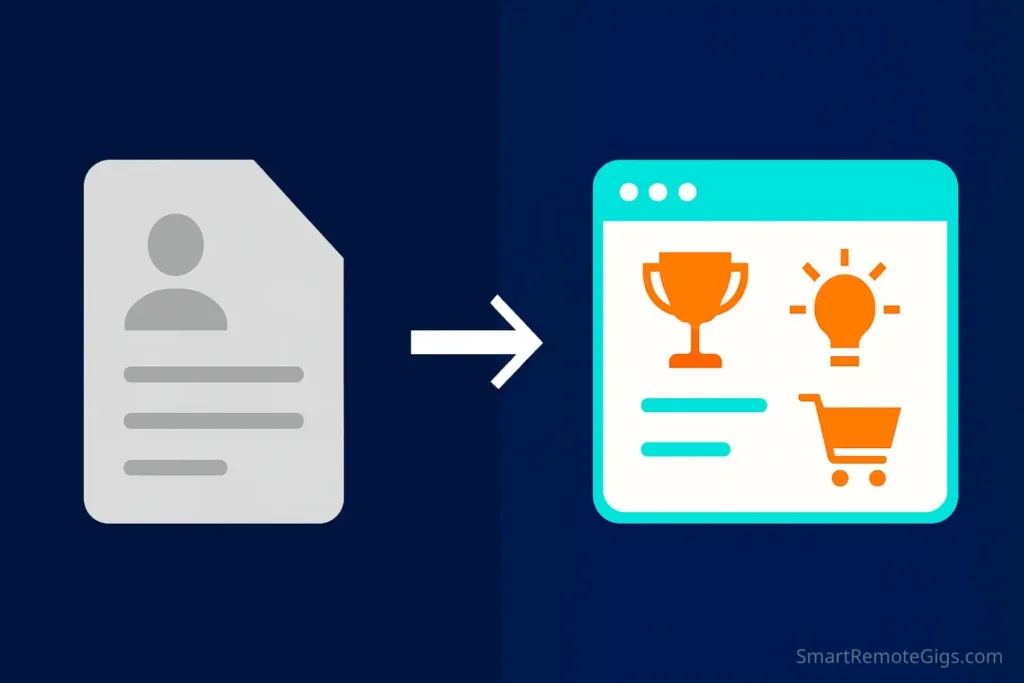
Craft a Client-Focused Title
Wrong Approach: “Writer” or “Graphic Designer”
Right Approach: “Blog Post Writer for Tech Startups” or “Logo Designer for Food & Beverage Brands”
The Formula: “[YOUR SKILL] for [SPECIFIC CLIENT TYPE]”
Why it works: This instantly signals your specialization, making you the obvious choice. Clients don’t search for “writers”—they search for solutions to specific problems, and a niche title speaks directly to their need.
Pro Examples:
- “WordPress Developer for E-commerce Businesses”
- “Social Media Manager for Real Estate Agents”
- “Data Entry Specialist for Healthcare Companies”
- “Email Marketing Expert for SaaS Companies”
Write an Overview That Sells a Solution, Not Just Skills
The Problem: Most profiles sound like this: “I am a skilled writer with 3 years of experience. I can write blog posts, articles, and web content. I am reliable and deliver quality work.”
The Solution: Focus on client outcomes, not your features.
Winning Overview Template:
Are you struggling to [CLIENT'S PAIN POINT]?
I help [TARGET CLIENT] achieve [SPECIFIC RESULT] through [YOUR METHOD].
In my [X] years of experience, I've helped businesses like yours:
• [Specific achievement #1]
• [Specific achievement #2]
• [Specific achievement #3]
My process ensures [KEY BENEFIT] while [ADDRESSING COMMON CONCERN].
Ready to [DESIRED OUTCOME]? Let's discuss how I can help your business thrive.
Why it works: This structure shifts the focus from your resume to the client’s success, which is all they truly care about.
Real Example:
Are you struggling to attract qualified leads through your website content?
I help B2B SaaS companies increase organic traffic and conversions through strategic blog content that ranks on Google.
In my 4 years of content marketing experience, I've helped businesses like yours:
• Increase organic traffic by 150% in 6 months
• Generate 50+ qualified leads monthly through blog content
• Rank on page 1 for competitive industry keywords
My research-first approach ensures every article targets buyer intent while establishing your authority in the market.
Ready to transform your blog into a lead generation machine? Let's discuss how I can help your business grow.
The “No-Client” Portfolio Section
Here’s the secret: You don’t need client work to showcase your abilities. Create portfolio pieces that demonstrate your skills and process.
For Writers:
- Write sample blog posts for companies in your target industry
- Create case studies analyzing successful content campaigns
- Develop content calendars for hypothetical clients
For Designers:
- Design mock logos for fictional companies
- Create social media templates for specific industries
- Develop complete brand identity packages
For Developers:
- Build demo applications showcasing your skills
- Create landing pages for different industries
- Develop WordPress themes or plugins
Portfolio Description Template:
**Project**: [Brief description]
**Challenge**: [What problem did you solve?]
**Solution**: [Your approach and methodology]
**Result**: [Outcome or what the client would gain]
Step 2: Finding the Right First Jobs
Not all Upwork jobs are created equal. As a beginner, you need to be strategic about which projects to target.
The Art of Filtering
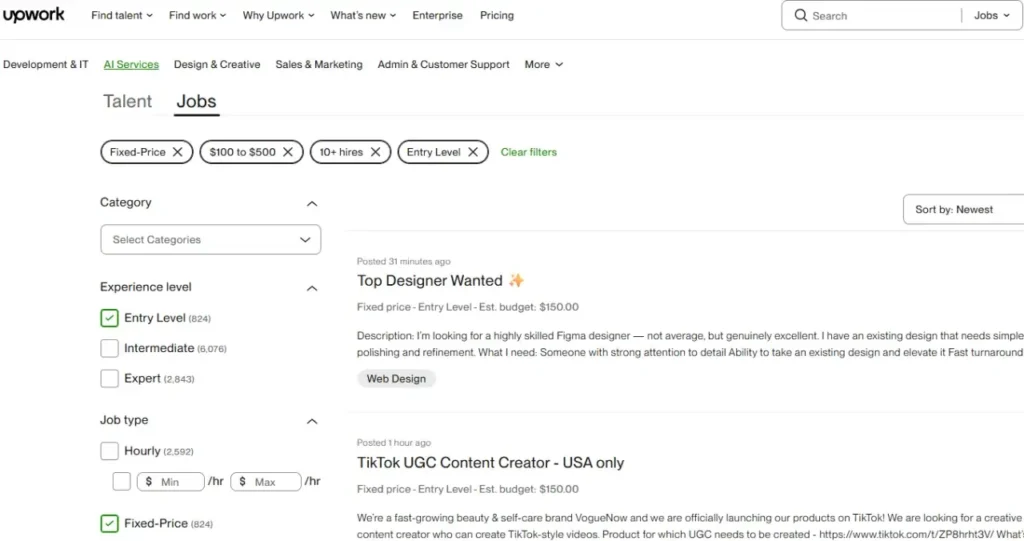
Filter Settings for Beginners:
- Job Type: Fixed-price (avoid hourly initially)
- Experience Level: Entry Level
- Client History: Payment verified
- Budget: $100-$500 (sweet spot for first jobs)
Red Flags to Avoid:
- Jobs with 20+ proposals already
- Vague descriptions like “Need a website”
- Clients with no payment history
- Budgets under $50 (usually low-quality clients)
Why You Should Look for “Urgent” or “Quick” Jobs
The Strategy: Target jobs with tight deadlines (24-48 hours). These clients are more likely to hire quickly and care less about your review count.
Search Keywords to Use:
- “urgent”
- “quick turnaround”
- “need ASAP”
- “fast delivery”
- “immediate start”
Why it works: Time pressure overrides the need for social proof – urgency becomes your competitive advantage.
Pro Tip: Set up saved searches with these keywords and check them multiple times daily. Speed is crucial for these opportunities.
Step 3: The Proposal That Gets a Response
Your proposal is your audition. Most freelancers fail because they write generic, feature-focused proposals. You need to write like a consultant, not a vendor.
The Anatomy of a Winning Proposal: The “3P” Formula
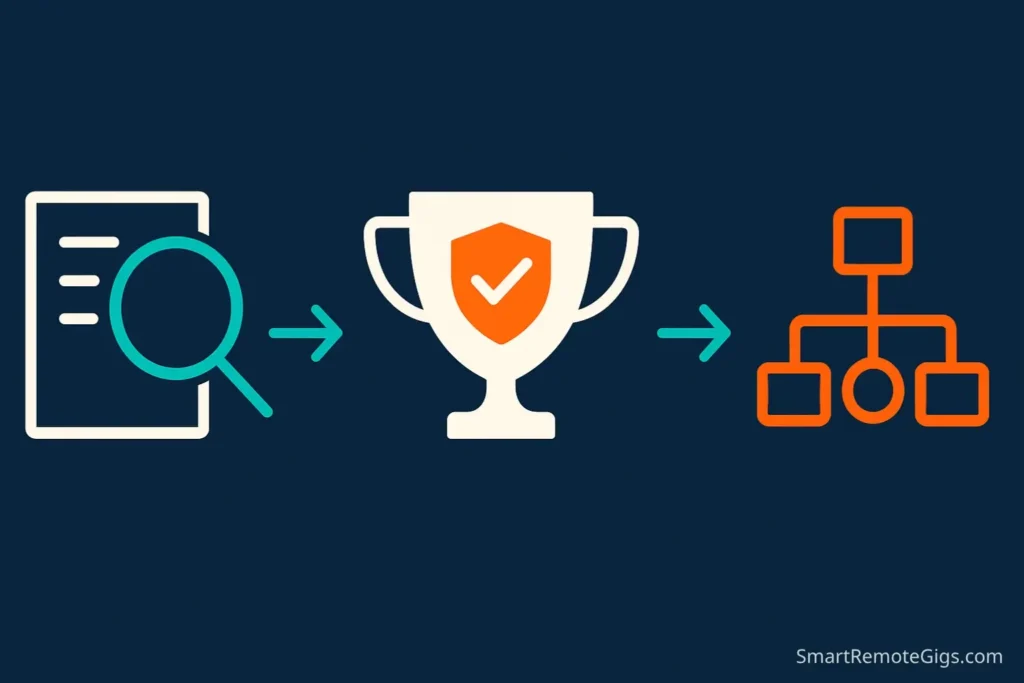
Problem: Acknowledge their specific challenge
Proof: Demonstrate you can solve it
Process: Outline your approach
Example Using the 3P Formula:
Hi [Client Name],
**PROBLEM**: I see you're struggling to create engaging social media content that converts followers into customers for your fitness coaching business.
**PROOF**: I've helped 15+ fitness professionals increase their Instagram engagement by 200% and generate 30+ leads monthly through strategic content planning. My recent client, a personal trainer in Austin, went from 500 to 5,000 followers in 4 months using my system.
**PROCESS**: Here's how I'd approach your project:
1. Audit your current content and identify gaps
2. Develop a content calendar based on your audience's interests
3. Create 30 high-converting posts with proven formats
4. Provide engagement strategies to maximize reach
This would typically take 5-7 days, and I can start immediately.
Would you like to discuss how this approach would work for your specific goals?
Best regards,
[Your Name]
Reusable Proposal Template (Copy & Paste)
Hi [CLIENT NAME],
I see you're [RESTATE THEIR MAIN PROBLEM FROM THE JOB POST].
I specialize in helping [TARGET CLIENT TYPE] achieve [SPECIFIC RESULT] through [YOUR METHOD]. Recently, I helped [BRIEF SUCCESS STORY OR SIMILAR PROJECT].
For your project, I would:
• [SPECIFIC DELIVERABLE #1]
• [SPECIFIC DELIVERABLE #2]
• [SPECIFIC DELIVERABLE #3]
Timeline: [REALISTIC TIMEFRAME]
Investment: [YOUR RATE - BE COMPETITIVE FOR FIRST JOBS]
I have [RELEVANT EXPERIENCE/SKILLS] that make me perfect for this project. [ATTACH RELEVANT PORTFOLIO PIECE].
Ready to [DESIRED OUTCOME]? I can start immediately.
Best regards,
[YOUR NAME]
The Critical First Two Lines
The Reality: Clients see only the first two lines of your proposal initially. These lines determine whether they’ll click “Read More” or move on.
Winning Openers:
- “I see you’re struggling to [SPECIFIC PROBLEM]…”
- “Your [INDUSTRY] business needs [SPECIFIC SOLUTION]…”
- “I just reviewed your [PROJECT DETAILS] and have a question…”
Losing Openers:
- “I am very interested in this project…”
- “I have read your job posting and…”
- “I am a skilled [PROFESSION] with…”
Pro Tip: Always reference something specific from their job post in your opening line. This proves you actually read their requirements.
Why it works: Personalization cuts through the noise of generic proposals and immediately establishes you as someone who pays attention to details.
Step 4: What to Do After You’re Hired
Landing the job is just the beginning. Your first project success determines your entire Upwork career trajectory.
How to Guarantee a 5-Star Review Every Time
The 5-Star Formula:
1. Over-Communicate: Send daily progress updates, even if it’s just “Working on section 2 today, on track for tomorrow’s deadline.”
2. Exceed Expectations: If they ask for 3 blog posts, deliver 3 posts plus a bonus content calendar.
3. Meet Deadlines: Deliver 2-4 hours before the agreed deadline. This single habit will set you apart from 80% of freelancers.
4. Ask for Feedback: Before final delivery, ask: “Does this meet your expectations, or would you like any adjustments?”
5. Professional Presentation: Don’t just send files. Create a brief summary of what you delivered and next steps.
The Review Request Template:
Hi [CLIENT NAME],
I've just delivered your [PROJECT TYPE] and wanted to ensure everything meets your expectations.
If you're happy with the work, I'd be grateful if you could leave a brief review about your experience. This helps me continue helping businesses like yours.
I look forward to working together again soon!
Best regards,
[YOUR NAME]
Pro Tip: Never explicitly ask for “5 stars.” Simply ask for “a review” and let the quality of your work speak for itself.
FAQ: Upwork for Newbies
How many Connects should I use on each proposal?
Start with 2-4 Connects for most proposals. Only use 6+ Connects for high-value projects ($500+) where you’re extremely qualified. As a beginner, volume and targeting matter more than premium placement.
Pro Strategy: Buy additional Connects monthly rather than using 6 per proposal. This allows you to submit more proposals and increases your chances of landing that crucial first job.
Is the “Rising Talent” badge important?
Yes, but don’t obsess over it. The Rising Talent badge helps you stand out, but it’s not a magic bullet. Focus on profile optimization and proposal quality first.
How to Get It: Complete your profile 100%, take relevant skill tests, and maintain a high proposal acceptance rate. It typically appears after 2-3 weeks of consistent activity.
Should I take the Upwork skill tests?
Take tests only if you’ll score in the top 30%. A low score hurts more than no score at all. Practice on similar tests online first, then take the official Upwork test when you’re confident.
Which Tests to Prioritize: Focus on tests directly related to your niche, not general skills like “English” or “Customer Service.”
How do I price my first jobs?
Be competitive, not cheap. Research similar freelancers in your category and price 10-20% below market rate for your first 3-5 jobs. Once you have reviews, gradually increase your rates.
Pricing Strategy: Start at $15-25/hour or $100-300 for fixed-price projects, depending on your skill level and market demand.
Your Next Steps: The 7-Day Action Plan
Day 1-2: Optimize your profile using this guide
Day 3: Create 2-3 portfolio pieces for your niche
Day 4-5: Set up job alerts and practice writing proposals
Day 6-7: Submit 10-15 targeted proposals to entry-level jobs
Remember: Success on Upwork isn’t about being perfect – it’s about being persistent, professional, and client-focused.
Your First Job is Waiting: The difference between freelancers who succeed and those who quit isn’t talent – it’s strategy. You now have the exact system that thousands of successful freelancers used to break through the “no experience” barrier.
Start with Step 1 today, and you’ll be earning your first freelance income within weeks, not months.
Continue Your Freelance Journey
You now have the complete blueprint for landing your first Upwork job. Ready to master the entire freelance ecosystem? Explore our other guides:
- The Big Picture: Choosing a Freelance Website: 2026 Beginner’s Playbook
- Build Your Proof: How to Build a Freelance Portfolio from Scratch
- Compare the Competition: Upwork vs. Fiverr: Which is Better for Beginners?


